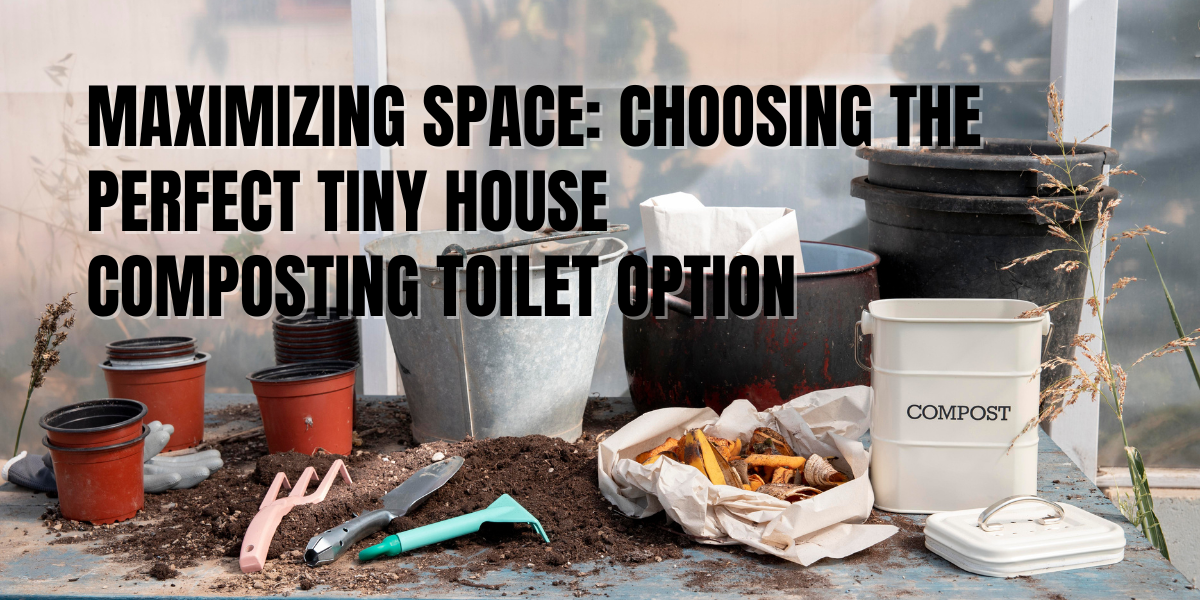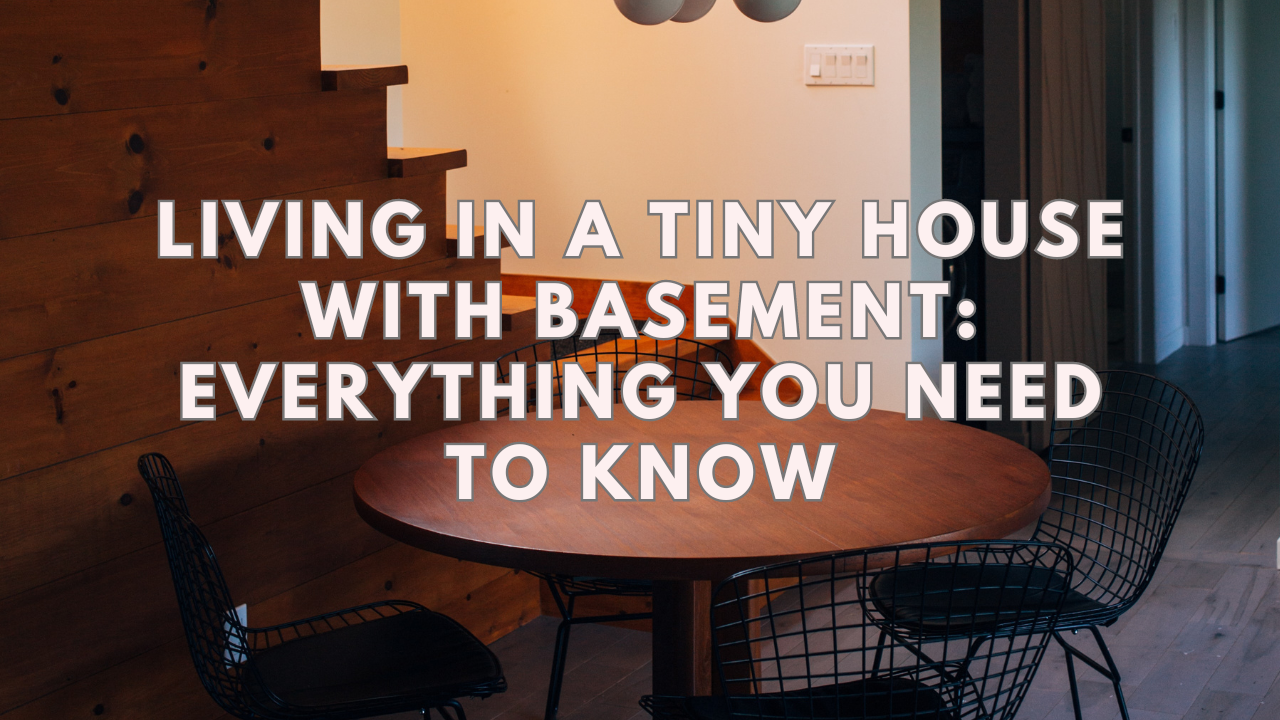Composting toilets are perfect for tiny houses, which are compact and frequently off-grid buildings that strive to minimize environmental impact and encourage simple living.
They provide several advantages, including water conservation, sewage reduction, and the creation of organic compost. It also needs attentive upkeep, such as bulking up the compost, agitating it, and emptying the completed product. Furthermore, some people might find it offensive or unhygienic to compost human waste. Consequently, selecting a tiny house composting toilet is a subjective choice based on one’s lifestyle, tastes, and values.
What Is a Composting Toilet?
It is a method of handling human waste used when a conventional sewer or septic system is neither practicable nor available.
Consider composting toilets to be the contemporary equivalent of outhouses. It does away with having to dig a trench, move the outhouse regularly, or deal with the unpleasant odors and vermin that are all too typical in an outhouse.
It organically decomposes human waste back into helpful, nutrient-rich compost piles by breaking down the waste and evaporating or at least separating the liquids.
How Does a Composting Toilet Work?
It successfully develops an ecosystem inside the toilet that will transform human waste into nutrient-rich compost. Composting toilets use the ideal balance of heat, oxygen, moisture, and organic material.
Toilets that use composting can safely and swiftly decompose waste and turn it into a usable product by providing the ideal conditions for natural decomposition.
All authentic composting toilets must do the same three basic tasks. Remove moisture, decompose solid waste without producing an odor, and create compost that is secure to handle.
The Best Composting Tiny House Toilet Options
1. Portable Laveo Dry Flush – Toilet
Despite not being a true composting toilet, the Laveo Dry Flush has recently gained popularity in the composting toilet industry. However, it is used as a portable or camping toilet.
After each use, it stores solid and liquid waste materials in sealed bags. Press the flush button to close the waste bag after use, pull it into the bottom of the machine, and store it for later disposal.
Pros:
- Not pricey
- Tiny and light in weight
- Using sealed trash to avoid handling sewage
- Its portability enables users to carry it with them wherever they go.
Cons:
- Refill cartridges can be pricey, costing close to $75 for each flush
- Because cartridges cannot be composted, garbage is dumped in landfills
- Battery-powered and periodically rechargeable.
2. Nature’s Head Toilet
RVers, campers, and van lifers appear to like Nature’s Head Dry Composting Toilet with Crank Handle as their toilet of choice. The toilet’s contents decompose more quickly when the contents are stirred up by the crank handle.
Pros:
- By combining solid trash with bulking stuff and composting it, it can be reduced to 10% of its original volume.
- When used by two people full-time, the apartment can last weeks without needing to be cleaned out
- Fully sealed to withstand any type of trip
- Very few components that move to fail
- Affordable pricing.
Cons:
- The user must empty the liquid container.
- An outside composter is advised since solid waste may take longer to compost completely. Extra solids bins with lids provided if not already present to allow compost the necessary time to decompose.
3. OGO – Composting Toilet
It is the most compact compost toilet on the marketplace, making it ideal for use in tiny homes, RV homes, boats, cabins, basements, and recreational vehicles.
Pros:
- No cranking necessary
- No odors
- 100% ecologically friendly so you can protect the environment and your wallet.
- Less frequent toilet cleaning because of the improved container
- Your area looks fantastic with a modern design.
Cons:
- Need electricity connection
- The user must empty the liquid container.
- An outside composter is advised since solid waste may take longer to fertilize completely.
4. Sun-Mar Mobile – Composting Toilet
The unusual-looking Sun-Mar toilet is a self-sustaining composting toilet that runs without power. Violent motion was a key design factor when it was created for boats and RVs. Since they can move around with it, tiny homeowners will love it.
Pros:
- Less annual clean-outs
- Waterless
- Free of odor
- DIY compost toilet installation
- 12 volt capable
- Longer cleanup cycles result in a more thorough waste breakdown.
- Specifically with travel in mind.
Cons:
- Need electricity connection
- Requires installing vent pipes
- Additional mechanisms
- Higher seat and unconventional-looking toilet.
5. Separett Composting Toilet
With those who live in compact houses, it is rapidly gaining popularity. It is an appealing alternative for many owners of tiny homes due to its simplicity in design and more classic toilet appearance. There is a tank for retaining waste and a sophisticated fan system that aids in venting. It can accommodate multiple users for three weeks.
Pros:
- Simple style reminiscent of conventional toilets
- No need for water
- Free of odor
- Not a step-up
- Trash drum that rotates
- Biodegradable bags
Cons:
- Need electricity connection
- Requires installing vent pipes
- A liquid drain hose is necessary.
What Are the Benefits of Using a Composting Toilet for a Tiny House?
Simple to Use
The system includes two composting chambers, but you can always add rooms to expand capacity if additional people are utilizing the system. One is a working chamber situated beneath the home and the toilet pedestal, and the other is a composting-specific out-of-service chamber.
To ensure you have sufficient chambers and to obtain the most possible from your system, it’s always crucial to mention how many people will be utilizing the system when buying a composting toilet.
It Has No Smell
The toilet is constantly because of the ventilation fan, which runs on DC power for off-grid residences and via an AC power converter for homes with a grid power supply. It implies that odor issues are never a concern.
Due to the continual air and scent evacuation, fan-vented toilet users report even less odor than people who use conventional flushing toilets.
It is a big benefit that cannot be overlooked, especially for those who live in compact dwellings.
They Look Amazing
Before the invention of the composter, composting toilets were not a popular alternative for residential use.
The provided porcelain toilet pedestal is gorgeous and perfectly crafted to fit into the contemporary bathroom. Other pedestal alternatives are available if necessary to ensure that your compost toilet will complement the design of your house.
Materials to Tiny House Composting Toilets
To prevent messes and odors in the bathroom, you need extra absorbent material.
Wood Shavings
The most suggestive If you have tried a lot of other toiletries, stop and try this one. The nicest and cleanest choice is pet store shavings.
Sawdust
Sawdust functions well for composting toilets, just like pet wood shavings do. The biggest problem is that it can be difficult to access endless sawdust unless you have a woodchipper or live close to a timber mill.
Cat Litter
For composting toilets, several people have experimented with various kinds of cat litter. It’s a poor notion and not a viable alternative that benefits people.
Coco Coir
Coco coir, which is made from the husks and shells of coconuts, works well for composting toilets but is difficult to find and can be expensive.
Peat Moss
There are now more environmentally friendly peat moss solutions available, and they are simple to locate. Peat moss is not the worst material for a tiny house toilet.
Wood Ash
I would not suggest making wood ash as toilet paper for your compact dwelling. It’s difficult to handle and incredibly untidy. It does, however, absorb odors.
Grass Clippings and Leaves
Likewise, this is not a fantastic long-term answer. It’s difficult to maintain unless you have a device to finely chop the clippings and leaves. Additionally, as grass and leaf clippings decompose, they release their stench, which can make the already unpleasant condition worse.
Hacks for Composting Toilet in Tiny Houses
A Built-in Woodchip Bin Is a Good Idea
A built-in trash can is a lovely addition to a bathroom in a little house. Of course, you could use a bucket or other container to keep the wood chips, but the bin gives the area a cleaner appearance. Some built-in containers for chips that are about 2 feet by 2 feet and have a closed lid.
Install a Vent Fan Fueled by Solar
If you have an indoor bathroom, a fan is a need. Something is required to get scents out of the cramped area. To stop flies and other pests from entering your bathroom, ensure the vent’s end is thoroughly screened.
A Urine Diverter Maintains a Fresh Toilet Odor
Wet matter smells far more than dry matter, although we associate odors with solid trash. A pee diverter is a clever funnel that separates the fluids and the sediments if you want the toilet to stay fresh. My female acquaintances have told me that this is a particularly valued feature.
Carefully Sealed the Toilet Lid
Spend some time gently sealing the toilet lid. To keep odors out, a good seal is essential. To achieve a great tight seal, add weather stripping, much like you would on a door.
FAQs
Are There Any Federal Building Regulations That Apply to Compost Toilets?
There may not be any explicit guidelines governing this restroom. However, it would be best to confirm for yourself what the local regulations are in this regard. You can look this up on Google or speak to your neighborhood zoning office.
Can a Composting Toilet Be Purchased for a Boat, RV, or Tiny House?
Yes. You must look for portable restrooms that are convenient for traveling. Even during a forceful movement, the self-contained toilets ought to stop waste from spilling or leaking.
What Should I Do With the Composting Toilet’s Urine?
Urine has advantages for trees and plants. To use urine as fertilizer for plants, dilute it with eight parts water and one part urine. There is no need to be concerned about the stench. I frequently use it in the yard. There is that and I also urinate in my yard when nobody is around.
Is Electricity Required for a Composting Toilet?
Several models use electricity to run their fans and vent continuously. Some use batteries to power them, while others attach to electrical plugs, like my Nature Head compost toilet, which is located next to an outlet in my compact house on wheels.
Wrapping Up
People who desire to live in a compact, environmentally conscious home might consider a tiny house composting toilet. You can generate fertilizer for your garden and conserve water with its assistance. It may not be to everyone’s taste or level of comfort, and it also takes some work and maintenance.
Therefore, you should conduct your study, assess the benefits and drawbacks, and choose the finest model for your needs before installing a tiny home composting toilet.
To learn more about this subject, consult the resources featured in this post.





